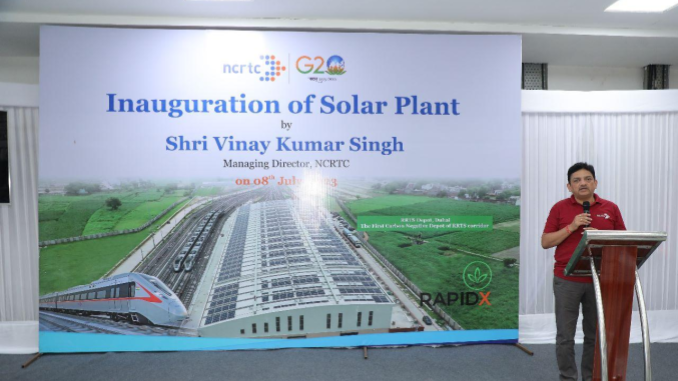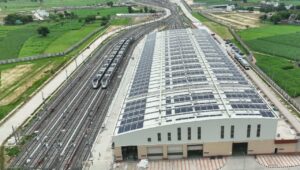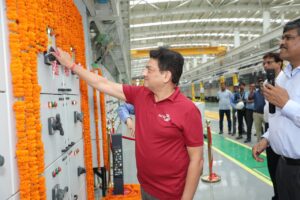
Shri Vinay Kumar Singh, Managing Director, NCRTC, inaugurated a state-of-the-art Solar Power Plant installed at the RRTS Depot in Duhai. This marks an important moment in the organisation’s commitment to embracing renewable energy and sustainable practices.

More Details:
- The Solar Power Plant has an installed capacity of 585 kWp, where the solar panels have been installed at various depot buildings including workshops. During its estimated lifespan of 25 years, this solar plant is projected to generate approximately 6,66,000 units of solar energy per year.
- The plant is expected to reduce CO2 emissions by 615 tonnes annually, contributing to a remarkable reduction of 15,375 tonnes over its lifetime.
- The solar energy produced through this Solar Plant will be monitored and optimised by a cutting-edge cloud-based application which will track the output on a regular basis. This advanced technology ensures transparency, efficiency, and seamless management of the solar energy infrastructure.
- The solar power generated by this plant will not only meet the energy requirements of the Depot in its entirety but will have surplus to use in other RRTS operations. It positions the Duhai Depot as a ‘Green Depot’ solidifying NCRTC’s commitment to sustainability. This achievement of Duhai Depot translates into going beyond ‘Net Zero Carbon Emission’ for auxiliary loads.
- As part of its commitment to the National Solar Mission and the promotion of clean and sustainable energy sources, NCRTC adopted a solar policy in March 2021. As per this policy, it will increase the share of renewable energy by generating about 11 MW peak in-house solar power on the rooftop of stations, depots and other buildings for non-traction purposes, in the next five years.

- Apart from this, it will optimise the energy mix to increase the share of renewable energy for traction purposes as well. It will also strive to put in place an appropriate investment climate that would leverage the Clean Development Mechanism (CDM) and Renewable Energy Certificate (REC).
- RRTS is a long-term strategic intervention by the Government of India and four state governments, Delhi, Haryana, Uttar Pradesh and Rajasthan, for decongestion of the National Capital, reduce vehicular congestion and air pollution, and enable the balanced and sustainable development of the region.
- Once operational, it will act as a transportation backbone for the entire NCR. The first RRTS corridor alone is expected to reduce vehicular congestion with more than one lakh vehicles going off the roads and will help reduce air pollution with more than 2.5 lakh tonnes of carbon dioxide in vehicular emissions coming down.
Source: NCRTC- Press Release | Images Credit: NCRTC

